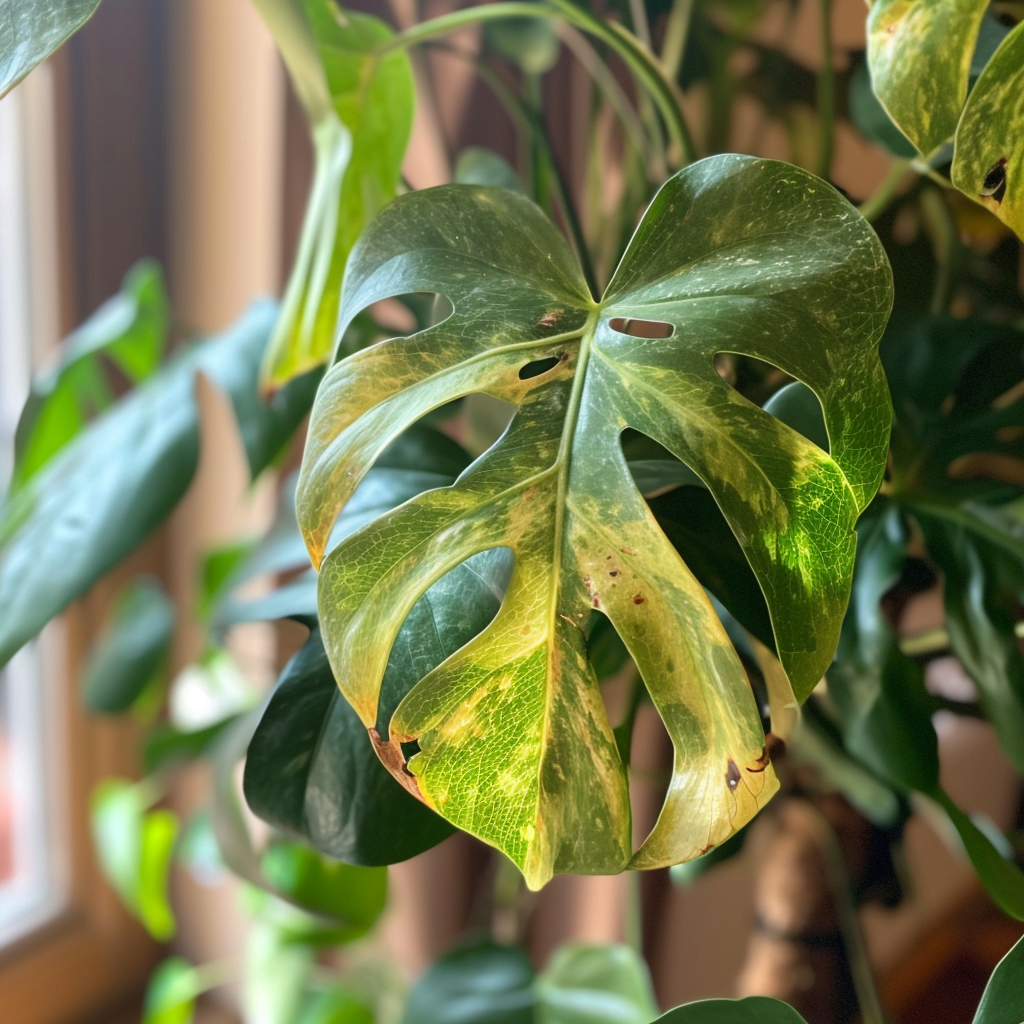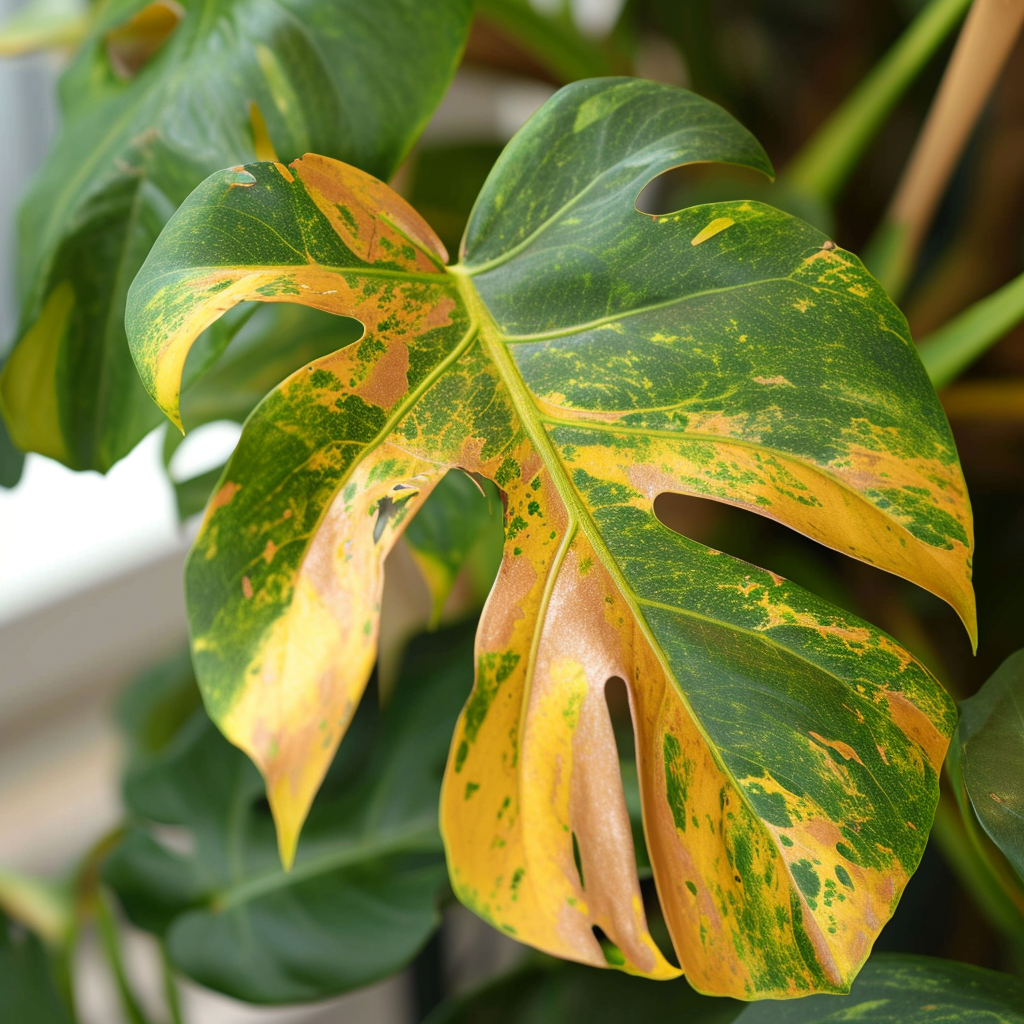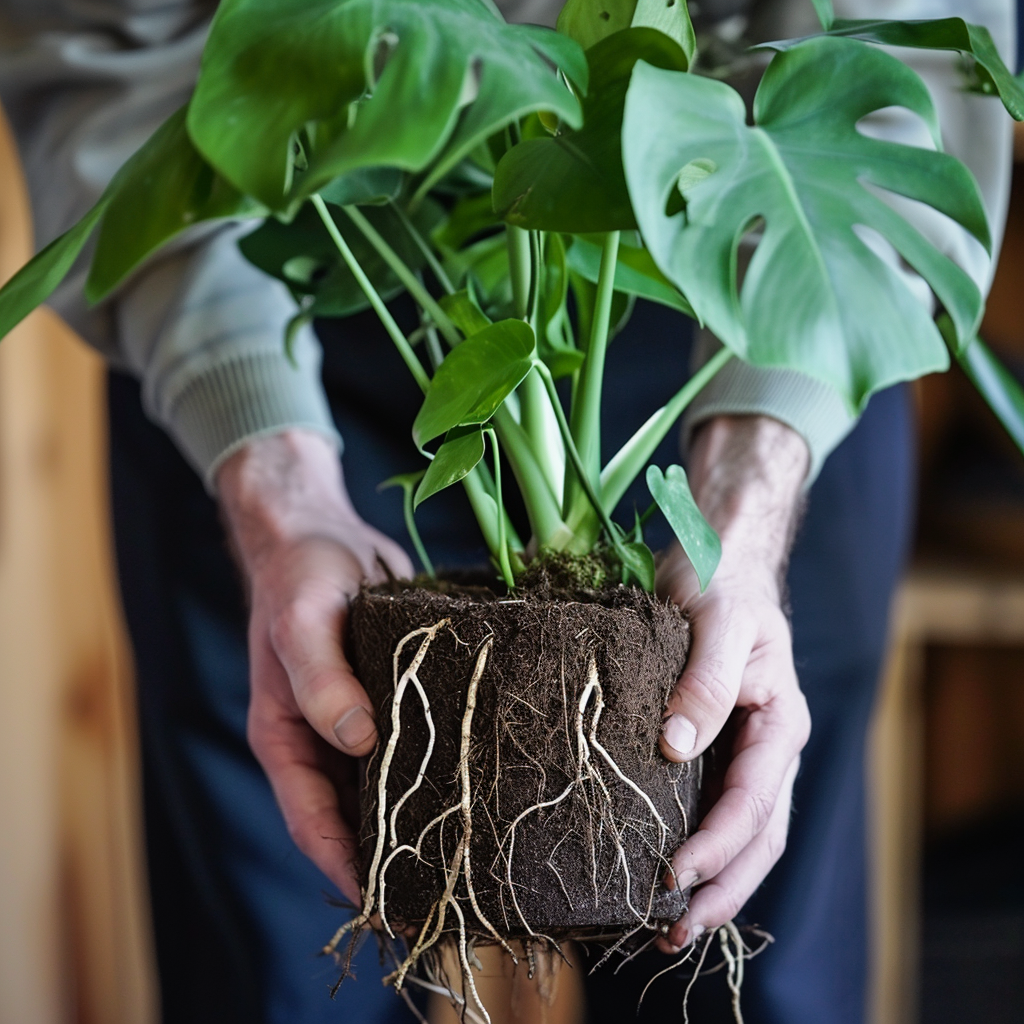Monstera deliciosa, also known as Swiss cheese plant, is a popular houseplant admired for its large, glossy, heart-shaped leaves with dramatic split leaf edges. But what does it take to keep these tropical beauties looking their best? Here’s an in-depth look at monstera plant needs.
Light
Monsteras thrive in bright, indirect light.
How Much Light Does Monstera Need?
Monsteras prefer moderately bright light but can adapt to lower light conditions. They grow best with 3-6 hours of bright, indirect sunlight each day. Direct sun will scorch the leaves. Low light will cause sparse, leggy growth. Find a spot near an east or west facing window for ideal light exposure.

Signs of Insufficient Light
If your monstera is not getting enough sunlight, you may notice:
- Sparse foliage
- Smaller leaves
- Leggy growth as the plant reaches for light
- Slow growth
- Pale leaves
- Difficulty flowering and fruiting
Boost the light by moving monstera closer to a window or adding a grow light. Rotate the plant frequently so all sides get proper illumination.
Water
Proper watering is key to a happy, healthy monstera.
How Much and How Often to Water
Monsteras like a thorough soak whenever the top few inches of soil begin to dry out. Water less in winter, more in summer. Allow soil to partially dry between waterings. Watering frequency depends on factors like pot size, plant size, temperature and humidity. In general, water 1-2 times per week in warmer months and every 1-2 weeks in winter.
Signs of Underwatering
Underwatered monsteras show signs such as:
- Drooping or curling leaves
- Brown crispy leaf edges
- Dull, lifeless foliage
- A spread out growth habit as the plant reaches for water
Increase watering frequency and volume. Water until it drains freely from the pot’s bottom drain holes.

Signs of Overwatering
Overwatered monsteras exhibit:
- Yellowing leaves
- Leaf drop
- Soft, mushy stems
- Root rot
Allow soil to dry out before watering again. Water less frequently. Improve drainage by repotting in fresh potting mix.
Humidity
Warm, humid conditions mimic monstera’s tropical origins. Higher humidity equals bigger, lusher leaves.
Ideal Humidity Level
Monsteras thrive in 60-80% relative humidity. Homes range from 30-60% humidity on average. Low humidity causes dry air, tip burn and crispy leaf edges.
Ways to Increase Humidity
Options to boost monstera’s humidity:
- Mist leaves daily
- Use a humidifier
- Place pot on a pebble tray
- Grow in a terrarium or greenhouse
- Group plants together to create a moist microclimate
Monitor for pests when humidity is higher. Ensure adequate airflow to discourage fungal or bacterial diseases.

Fertilizer
Proper fertilization nourishes monsteras during the active growing season.
Type of Fertilizer
Choose a balanced houseplant fertilizer or one formulated for foliage plants. Look for an NPK ratio like 10-10-10 or 20-20-20. Organic or chemical fertilizers both work well.
When and How Often to Fertilize
Fertilize monsteras every 2-4 weeks in spring and summer when actively growing. Fertilize monthly or less in fall and winter when growth slows. Always follow label directions for dilution and application.
Signs of Deficiency
Monsteras lacking nutrients may exhibit:
- Slow growth
- Smaller leaves
- Yellowing leaves (chlorosis)
- Browning leaf tips and margins
- Poor flowering/fruiting
Increase fertilizer frequency and concentration. Supplement with compost or worm castings.

Support/Staking
Monstera’s large, spreading leaves require proper staking for support.
Why Monstera Needs Staking
Monstera’s climbing nature causes it to grow outward and downward without support. Stakes or trellises keep plants tidy and upright. This prevents damage to those big, delicate leaves. Proper support also encourages larger, more fenestrated foliage.
Staking Materials
Good options for staking monstera include:
- Bamboo or wooden stakes
- Coir or moss poles
- Trellises
- Plant frames
- Fishing line
Use soft ties to gently secure stems to supports. Avoid anything that constricts or damages the stems.

Repotting
Repotting provides fresh soil and room to grow.
When to Repot
Repot young monsteras annually in spring. Mature plants can be repotted every 2-3 years. Repot if roots are crowded or protruding from drain holes.

Transform your home into a tropical paradise with Monstera Variegated
Potting Mix
Use a well-draining potting mix amended with perlite or bark. Options include:
- Peat and perlite
- Coconut coir and perlite
- Orchid bark mixes
- Aroid blends
Add compost or worm castings to enrich the soil.
New Pot Size
Size up 2-4 inches when repotting. Minimal root disturbance encourages faster growth. Choose containers with drainage holes and avoid overpotting.
Propagation
Monstera is easily propagated to create new plants.
Propagation Methods
Popular ways to propagate monstera include:
- Stem cuttings in water or moist potting mix
- Air layering by notching and wrapping moist sphagnum moss around a stem
- Top cuttings by removing an aerial root plus attached node/leaf
- Division of the rhizome roots on a mature plant

Caring for Propagules
Place cuttings or new plantlets in bright, indirect light. Keep soil evenly moist but not soggy. Fertilize lightly once new growth emerges. Support with stakes as needed. Hardening off before moving to full sun prevents leaf burn.
Common Problems
Learn to prevent and treat the most common monstera health issues.
Pests
Common monstera pests and solutions include:
- Mealybugs – Remove with a cotton swab dipped in alcohol.
- Scale – Wipe off individually with a cotton swab or prune affected stems.
- Aphids – Blast them off with a strong spray of water. Apply insecticidal soap.
- Thrips – Quarantine and treat with neem oil or spinosad.
Diseases
Watch for these diseases and treat as needed:
- Bacterial leaf spot – Improve airflow. Remove affected leaves. Apply copper fungicide.
- Fungal leaf spot – Prune affected leaves. Apply neem oil or sulfur fungicide.
- Root rot – Repot in new, sterile soil. Improve drainage. Allow soil to dry between waterings.
Environmental Issues
Monitor growing conditions and adjust as needed:
- Crispy brown leaf edges indicate low humidity. Increase humidity level.
- Yellow leaves often signify overwatering. Allow soil to dry out before watering again.
- Leggy growth means insufficient light. Provide brighter light.
- Leaf scorching or sunburn can occur in direct sun. Filter or diffuse intense light.
Conclusion
The captivating monstera remains a favorite houseplant thanks to its tropical appeal, sculptural leaves and ease of care when provided with proper moisture, humidity, light, nutrition and support. Pay attention to its needs and your monstera will reward you with unmatched jungle vibes and graceful beauty. Satisfy this plant’s requirements for water, light, humidity and fertilizer to keep it growing strong.
FAQ
- Q: What are the basic care requirements for a Monstera plant? A: Monstera plants thrive when provided with bright, indirect light, well-draining soil, and regular watering. They also benefit from occasional pruning and support for their climbing vines.
- Q: How often should I water my Monstera plant? A: Monstera plants prefer to dry out slightly between waterings. Water them when the top inch of soil feels dry, typically every 1-2 weeks, depending on factors like humidity and pot size.
- Q: What kind of light does a Monstera plant need? A: Monstera plants do best in bright, indirect light. Avoid direct sunlight, as it can scorch their leaves. They can tolerate lower light conditions but may grow more slowly.
- Q: Should I fertilize my Monstera plant, and if so, how often? A: Yes, you should fertilize your Monstera plant during the growing season (spring and summer) with a balanced, water-soluble fertilizer. Feed them every 4-6 weeks to promote healthy growth.
- Q: How do I provide support for my Monstera plant’s climbing vines? A: Monstera plants are natural climbers. You can provide support using stakes, trellises, or a moss pole. Gently tie the vines to the support structure as they grow to encourage upward growth and prevent sprawling.
See more Is Your Home Right for Monstera?

